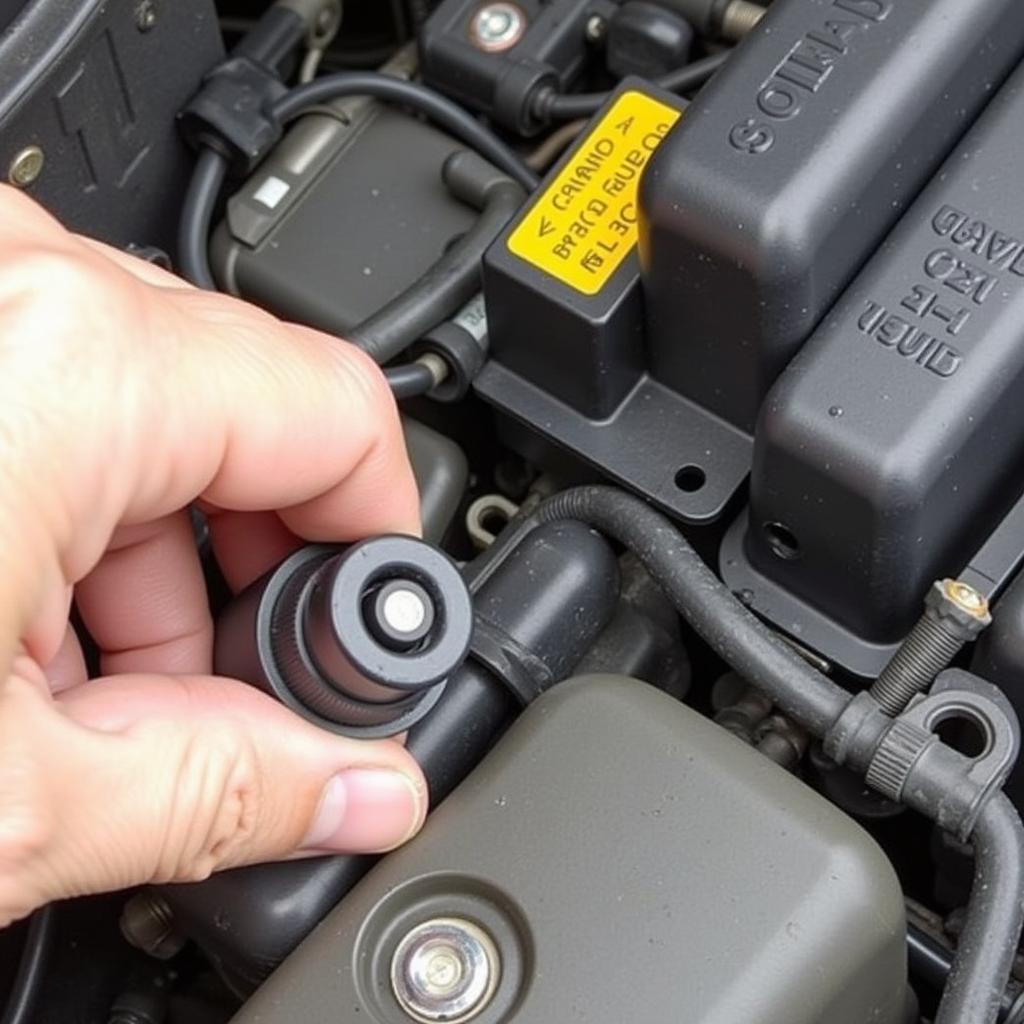Experiencing an intermittent brake failure warning in your 2004 Volvo S60, especially when no diagnostic trouble codes (DTCs) are present, can be a frustrating and potentially dangerous situation. This article aims to provide a comprehensive guide to troubleshooting this specific issue, offering potential solutions and expert insights to help you regain confidence in your Volvo’s braking system.
Understanding the Intermittent Brake Failure Warning
The brake failure warning light, often accompanied by a message on the driver information module (DIM), is designed to alert you to potential problems within the braking system. However, when the warning appears intermittently and your Volvo’s onboard diagnostics aren’t registering any fault codes, pinpointing the cause can be challenging. This “phantom” warning can stem from several sources, some relatively minor and others requiring immediate attention. Understanding the complexities of the S60’s braking system is key to effectively diagnosing and resolving the issue.
Potential Causes of Intermittent Brake Failure Warning with No Code in a 2004 S60
Several factors can contribute to this elusive problem, ranging from simple electrical glitches to more serious mechanical issues. Let’s explore some of the most common culprits:
Low Brake Fluid Level
While a low brake fluid level typically triggers a specific warning light, it can sometimes contribute to the general brake failure warning, especially if the level fluctuates.
Faulty Brake Fluid Level Sensor
Even with sufficient brake fluid, a malfunctioning sensor can send erroneous signals to the car’s computer, triggering the warning.
Wiring Issues
Corroded or damaged wiring within the braking system can cause intermittent disruptions in communication between sensors and the control module.
ABS Module Problems
Although less common, issues with the Anti-lock Braking System (ABS) module, such as internal faults or failing components, can sometimes trigger the brake failure warning.
Brake Booster Issues
Problems with the brake booster, especially vacuum leaks, can impact braking performance and potentially trigger the warning light.
 Checking Brake Fluid Level in a 2004 Volvo S60
Checking Brake Fluid Level in a 2004 Volvo S60
Brake Pad Wear Sensor Malfunction
Although unlikely to cause a brake failure warning directly, a faulty pad wear sensor could contribute to the overall issue if it’s sending incorrect signals.
Software Glitches
Occasionally, software glitches within the car’s control modules can cause spurious warnings. A software update or reset might be necessary.
Troubleshooting Steps
If you’re experiencing this issue, here’s a step-by-step guide to help you troubleshoot:
- Check the brake fluid level: Ensure the fluid is at the correct level. Top it off if necessary.
- Inspect the brake fluid level sensor: Look for any signs of damage or corrosion. Consider replacing the sensor if it appears faulty.
- Examine the wiring: Carefully inspect all wiring connections related to the braking system for damage, corrosion, or loose connections.
- Test the ABS module: A diagnostic scan tool can help identify any faults within the ABS module.
- Check the brake booster: Listen for hissing sounds, which could indicate a vacuum leak. Inspect the vacuum hoses and connections.
Seeking Professional Help
While some of these checks can be performed by a DIY enthusiast, it’s crucial to seek professional help if you’re not comfortable working on your car’s braking system.
“Intermittent issues are notoriously tricky to diagnose. A professional technician with access to specialized diagnostic equipment and Volvo-specific knowledge will be best equipped to identify the root cause and recommend the appropriate repair.” – John Andersson, Volvo Master Technician
Remote Diagnostics and Software Solutions
In some cases, remote diagnostics and software updates can resolve the issue. These advanced techniques can identify and address software glitches or programming errors without requiring a physical visit to a repair shop.
Conclusion
The intermittent brake failure warning with no code in a 2004 Volvo S60 can be a complex problem. This guide offers potential solutions and troubleshooting steps, empowering you to address this issue effectively. Remember, your safety is paramount. Don’t hesitate to seek professional assistance if you’re unsure about any aspect of the diagnosis or repair process. Addressing the problem promptly will ensure your Volvo S60’s braking system operates reliably and safely.
“Regular maintenance and inspections are crucial for preventing brake system problems. Addressing issues proactively can save you time, money, and potentially prevent a dangerous situation.” – Maria Eriksson, Automotive Safety Expert
FAQ
-
Could a low battery cause this warning? While unlikely, a severely low battery can sometimes cause erratic behavior in the car’s electrical systems.
-
Is it safe to drive with this warning? If the warning is intermittent and the brakes feel normal, you can cautiously drive to a repair shop. However, if the brakes feel spongy or unresponsive, do not drive the car.
-
Can I reset the warning light myself? While disconnecting the battery might temporarily reset the warning, it won’t address the underlying issue.
-
How much does it typically cost to fix this problem? The cost varies depending on the cause and the necessary repairs.
-
Can I prevent this issue from happening again? Regular brake system maintenance, including fluid flushes and inspections, can help prevent future problems.
-
Should I check the brake pads and rotors? While not directly related to the warning with no code, it’s always good practice to check the condition of your brakes regularly.
-
Can I use a generic OBD-II scanner to diagnose this problem? While a generic scanner might not reveal Volvo-specific codes, it can sometimes identify other related issues. A Volvo-specific scanner is recommended for more comprehensive diagnostics.

